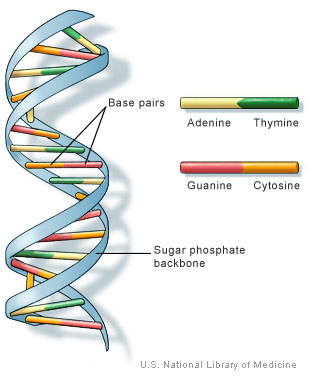
Scientific Breakthroughs
Recent technological breakthroughs in genomic analysis, combined with archeological, paleoanthropological, linguistic and other information, now give us an unparalleled opportunity to trace humanity’s evolution and movement in time—how we developed, differentiated and interbred many times, and arrived at our present planet-wide population.
Until recently, the leading theory of human population descent, known as the “serial founder” model, envisioned modern humans expanding out of Africa and the Near East around 50,000 years ago and leaving descendent populations along their routes of migration. The settlements of these groups were thought to remain unmixed for tens of thousands of years, and consequently were classified according to location, superficial appearance and culture as East Asians, Caucasians, West Africans, Native Americans and Australasians.
We now know, thanks to studies of ancient DNA (aDNA), that the serial founder model is wrong. It turns out that present-day populations are actually mixtures of highly divergent populations that no longer exist. Nor are present-day populations, thanks to perennial migration and mixing, exclusive descendants of the populations that lived in the same locations ten thousand years ago.

The announcement of evolutionary trees based on variation in mitochondrial DNA in a 1987 edition of Nature, followed by a study on evolution of the human Y chromosome a few years later, staggered the world. From the pattern created by the random genetic variations on both of these lineages, geneticists can conclude facts rather than suppositions and can of course construct family trees for everyone alive today.
DNA molecules make up the human genome, the genetic code that each of us inherits from our parents. DNA consists of twin chains of molecules called nucleotides made from the chemicals adenine (A), cytosine (C), guanine (G) and thymine (T). Each chain, broken up into 23 chromosomes, adds up to about three billion chemical blocks in length. Genes are fragments of these chains, generally around a thousand nucleotides long, each one telling something about how the body is built.
All humanity descended from a single female ancestor and her birthplace was Africa.
Each time egg and sperm are created, the approximately three billion base pairs of DNA comprising our genes are copied. Random variations in these inherited sequences are called mutations—or markers. They are what make us individual, and they are also the means by which individual ancestry can be determined. Since these changes occur at a known constant rate over time—roughly once every thousand nucleotides—the greater number of differences between two people’s mutations, the further they are away from sharing a common ancestor.
All living men are related through a single male ancestor who lived 60,000–100,000 years ago.
Mitochondrial DNA (mtDNA) is inherited only through the maternal line in humans. This knowledge enabled geneticists to demonstrate that all humanity descended from a single female ancestor, now known as “Mitochondrial Eve,” and established that her birthplace, and that of all humanity, was Africa.
All male mammals have one Y chromosome that contains a gene called SRY, which triggers the development of a male. The Y chromosome is passed down essentially unchanged from one generation to the next; in other words, the Y chromosome DNA of all living men is related through a single male ancestor who lived 60,000–100,000 years ago. This discovery enabled population geneticists to trace human ancestries through the pattern of mutations or markers carried on the male Y chromosome.


Follow “The Journey of Man—A Genetic Odyssey” a 13-part PBS film of the amazing human journey out of Africa and across the world with population geneticist Spencer Wells.
Spencer Wells takes us, as he says, on a journey that began “a long time ago [when] your family were on the brink of dying out. Yet, somehow against impossible odds they managed not only to survive but to become the most successful people on the planet.”

She Has Her Mother’s Laugh
The Powers, Perversions and Potential of Heredity
Carl Zimmer
Our understanding of heredity has come a long way and holds much promise, but we’ll need wise judgement to manage the emerging science of genetic engineering.
In the series: Genetics and Human Evolution
Related articles:
Further Reading »
External Stories and Videos

Ancient DNA reveals reason for high MS and Alzheimer’s rates in Europe
Jacqueline Garget, University of Cambridge
By sequencing ancient human DNA and comparing it to modern-day samples, an international team of experts are mapping the historical spread of genes – and diseases – over time as populations migrated. For example, the genetic variants associated with a risk of developing MS ‘travelled’ with the Yamnaya people - livestock herders who migrated over the Pontic Steppe into North-Western Europe.

Basic Information about Genomics
Quick lessons to help you learn more about genomics, so you can explore your own data in a more meaningful way.

How Europeans Evolved White Skin
Ann Gibbons, Science
A recent study shows that pale skin, as well as other traits such as tallness and the ability to digest milk as adults, arrived in most of Europe relatively recently.


Watch: Lice and Human Evolution
PBS NOVA ScienceNOW
Watch the amazing story of how the genetic history of lice gives us clues to mysteries of our own evolution.

